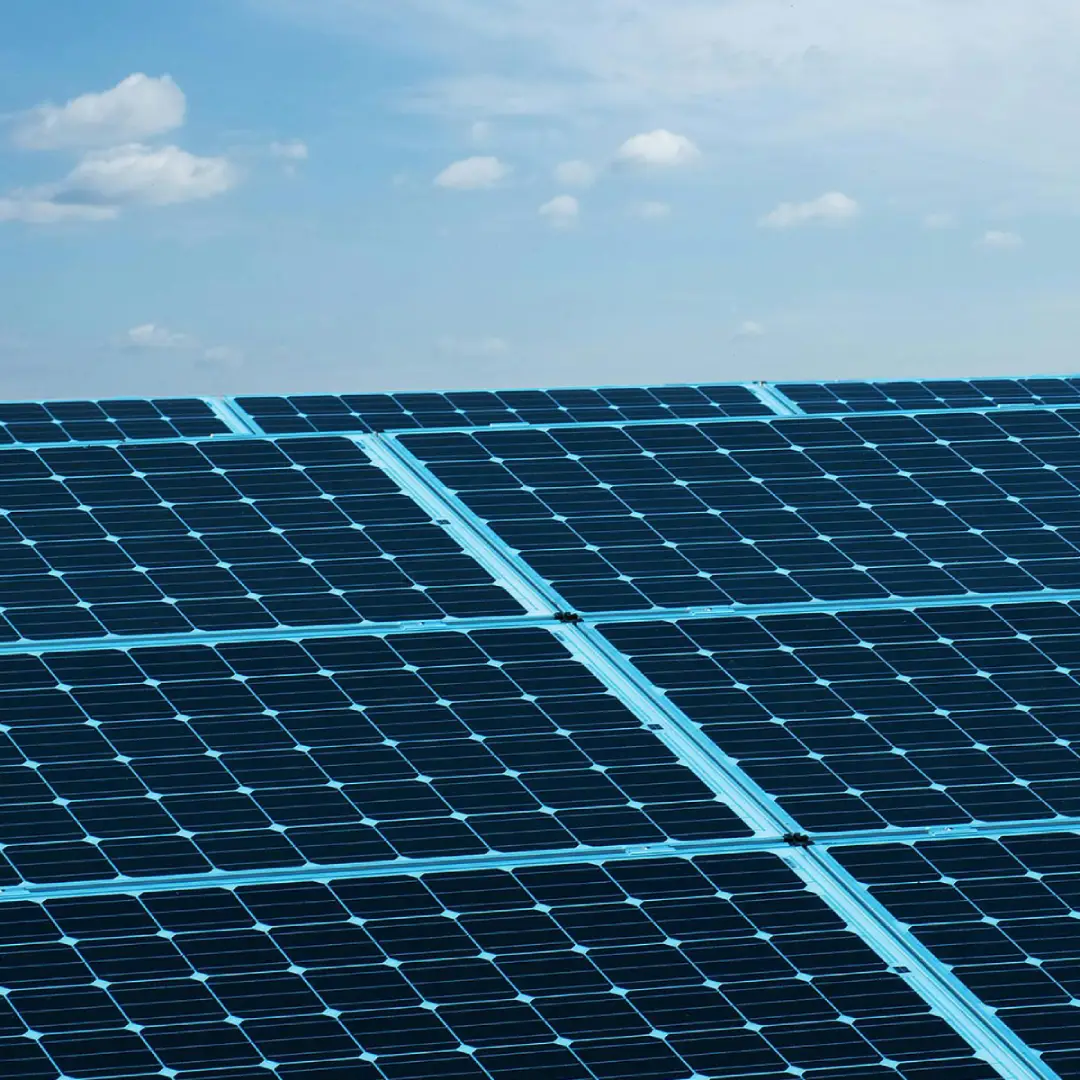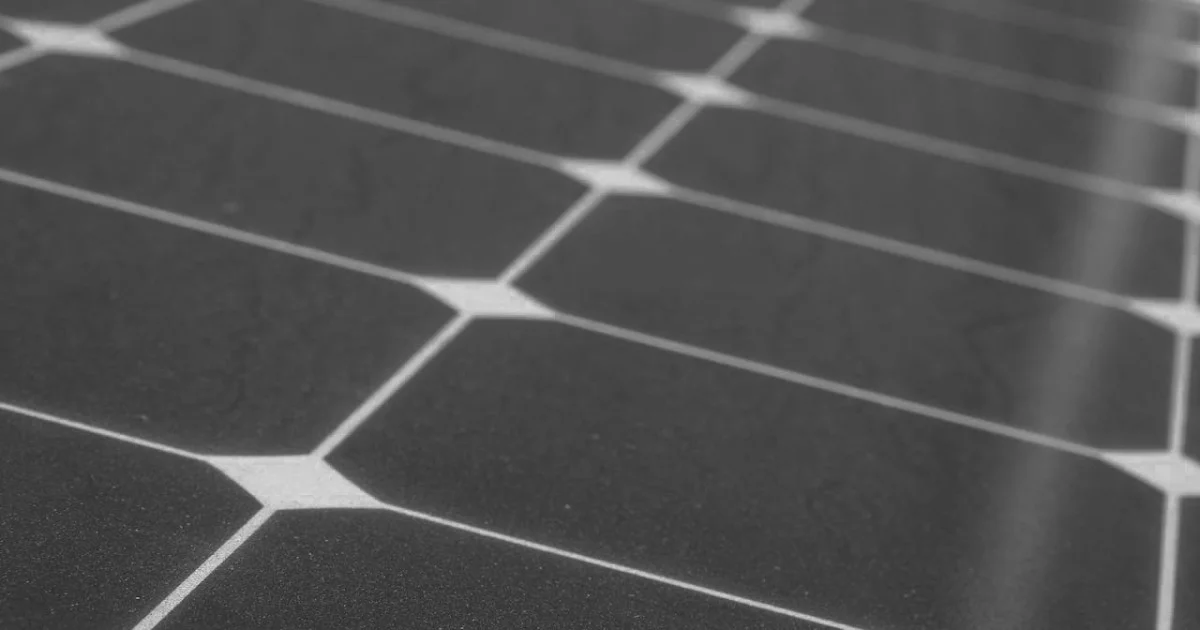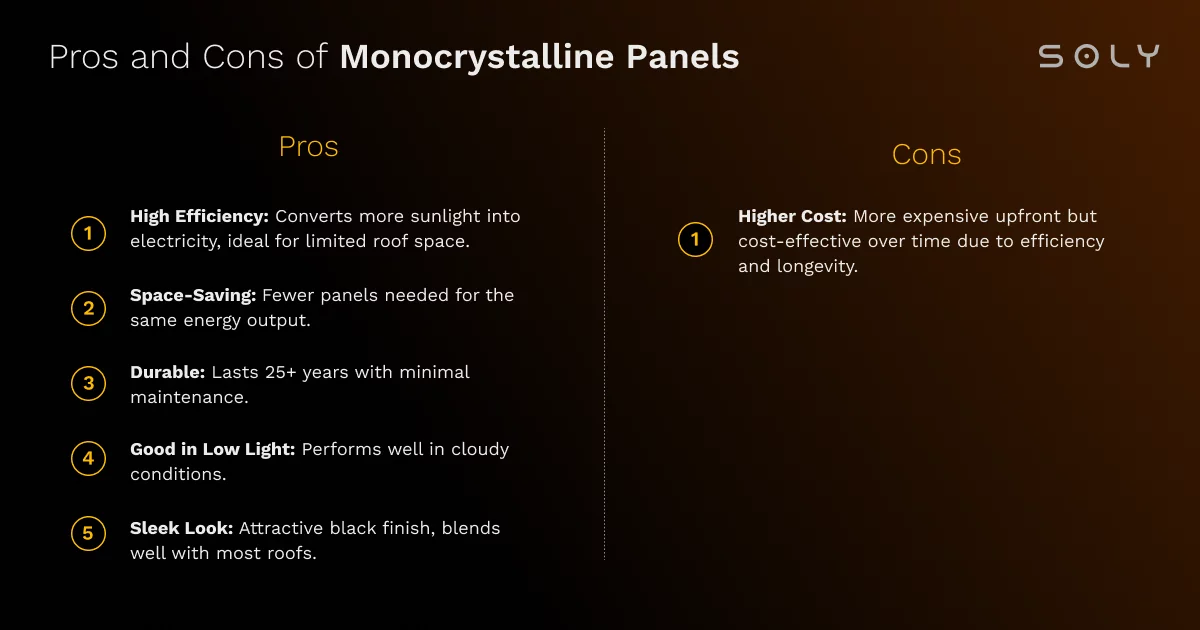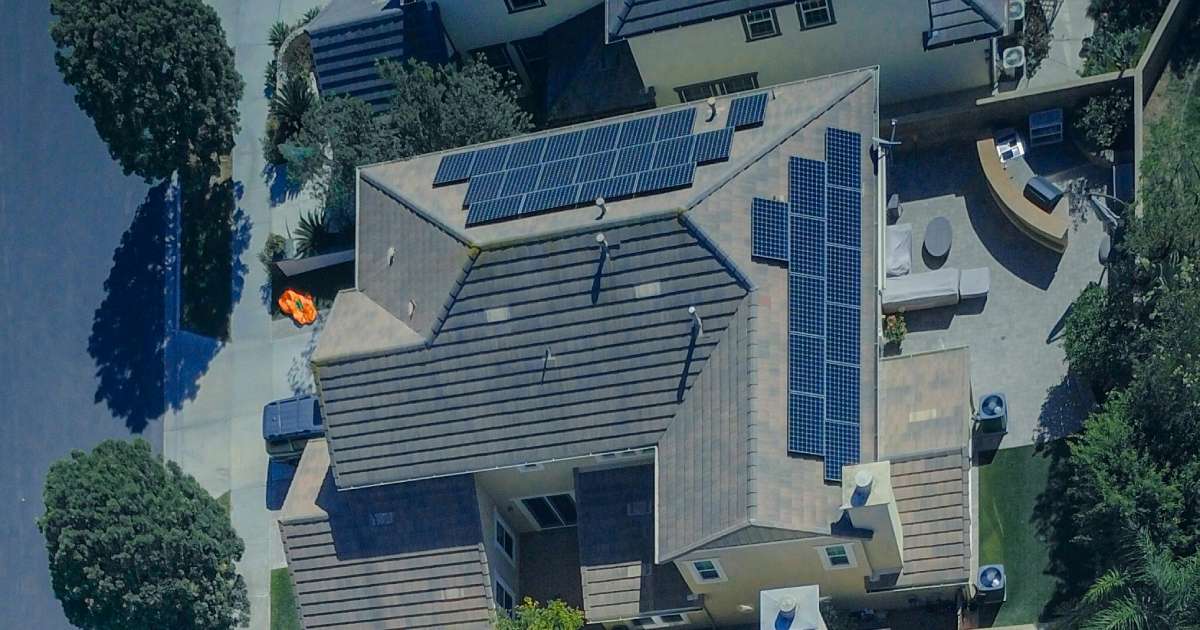Monocrystalline solar panels explained
Are monocrystalline solar panels a good investment for UK homeowners? With 44% of the solar PV market share, monocrystalline solar panels are a top choice for their excellent performance and efficiency. These panels thrive in regions where space is constrained, making them a go-to choice for UK homeowners pursuing energy efficiency and substantial savings.

As energy bills continue to rise, many are turning to solar energy as a solution to cut costs. Among the types of solar panels available, monocrystalline panels are often hailed as the most efficient option. But what makes them stand out, and are they really worth the higher price tag?
Monocrystalline solar panels are celebrated for their impressive efficiency and resilience. Yet, this means that they also come along with a much higher price when compared to other panel types. This makes it important to truly weigh the benefits and drawbacks of these panels, especially when it comes to the UK’s unpredictable weather, as it can guide you in determining if they’re going to be the right choice for your home.
On this page, you’ll learn:
- What monocrystalline solar panels are and why they’re considered the most efficient option.
- The benefits and drawbacks of monocrystalline panels, particularly for UK homes.
- Key factors to consider, including cost, performance in different weather conditions, and more.
Let’s get started!
What is a Monocrystalline solar panel?
Monocrystalline solar panels are crafted from single-crystal silicon cells. This gives them a sleek, uniform, black hue. This striking design is a result from the way the light interacts with the pure silicon. It creates a sleek, visually appealing finish that many homeowners have come to prefer.

What truly sets these panels apart is their higher efficiency when compared to other types of solar panels, like polycrystalline or thin-film. The single-crystal structure allows electrons to move more freely. This makes monocrystalline panels exceptionally more effective at converting the sun’s rays into electricity.
How do Monocrystalline solar panels work?
The real secret to this remarkable efficiency that we find within the monocrystalline solar panels lies in their single-crystal structure. This facilitates a much smoother flow of electrons through the cells. In fact, this structure allows them to achieve higher energy conversion rates.
Those rates are typically between above 20%, which places them as one of the most efficient options available on the market today.
This means that monocrystalline panels can generate more power from the same amount of sunlight compared to other panel types. It makes them the perfect choice for homeowners that are aiming to truly maximise their energy production, especially in situations where they have limited roof space.
Pros and cons of Monocrystalline solar panels
Let’s look at the pros and cons of monocrystalline solar panels below:

Advantages
✅ High Efficiency:
Monocrystalline panels are notorious for their exceptional efficiency. The silicon that’s used in these panels is so pure that it allows them to convert so much more of the sun’s rays into electricity than polycrystalline or thin-film alternatives.
For homeowners with limited roof space, monocrystalline panels can produce more power per square metre than other types of panels. This makes them the ultimate choice for those that really want to get the most out of their solar setup.
✅ Space-Saving:
Thanks to their higher efficiency, you don’t need as many panels. It takes fewer monocrystalline panels to produce the same amount of power as polycrystalline panels.
This makes them a space-saving solution for smaller roofs. This is important where maximising energy output with limited panel area is top priority.
✅ Last longer and they’re more durable:
Monocrystalline solar panels are built to last. They generally have a lifespan of over 25 years. What’s more, many come with warranties that cover this period.
They also require minimal maintenance, with most issues covered by the manufacturer.
✅ Great performance in low light:
One of the standout features of monocrystalline panels is their ability to perform well in low-light conditions.
In places like the UK, where cloud cover is quite common, these panels still manage to produce substantial amounts of electricity. This makes them a choice you can count on, even in areas that don’t get as much sun as others.
✅ Sleek aesthetics:
As mentioned, monocrystalline panels have that sleek black finish that many homeowners find visually striking. Unlike the blueish hue of polycrystalline panels, the uniform black shade of monocrystalline panels blends much better with many different roof types.
So, for those who care about aesthetics, the dark hue we find with monocrystalline often becomes the favoured choice.
Disadvantages
❌ Higher Initial Cost:
While monocrystalline panels offer many advantages, they do come with a higher price tag. The panels are more expensive due to the complex manufacturing process and the use of high-purity silicon.
However, their exceptional efficiency and long-lasting durability often render them a more cost-effective investment over time.
Monocrystalline vs Polycrystalline solar panels: What’s the difference?
To help you better understand the differences between monocrystalline and polycrystalline solar panels, here’s a quick comparison:
Pros and cons of Polycrystalline solar panels
Here’s a quick look at the pros and cons of polycrystalline solar panels when considering Mono vs Poly solar panels:
Pros
- ✅ Less expensive: Poly panels generally cost less than monocrystalline panels. So, this makes them a good choice for homeowners on a budget.
- ✅ Comparable lifespan: These panels typically last just as long as monocrystalline ones, often exceeding 25 years.
Cons
- ❌ Lower efficiency: Polycrystalline panels aren’t as efficient at converting the sun’s rays into electricity, typically 14%-16%. This means you’ll need to install more of them to get the same amount of power.
- ❌ More space required: Because they’re not as efficient as monocrystalline, they take up more roof space to produce the same amount of power.
- ❌ Less heat tolerance: Polycrystalline panels don’t handle heat as well as monocrystalline ones. This mean they are not as efficient in hotter climates.
- ❌ Bluish colour: The blue tint of polycrystalline panels can be more noticeable on your roof. Some homeowners might find them less visually appealing.
How much do Monocrystalline solar panels cost?
On average, monocrystalline solar panels cost about £1 per watt. So, for a typical residential system of around 3 kWh, you’d need 6 panels, each producing about 435W.
Here’s a breakdown of the monocrystalline solar panel costs:
- Panel wattage: 435W
- Number of panels: 6
- Cost per panel: £435
So, the total cost for 6 mono panels is: 6 x £435 = £2,610.
Although the upfront cost is higher, these panels generate more energy and use less space, making them a great option for homeowners with limited roof space.

FAQ
Are monocrystalline solar panels better?
Yes, monocrystalline panels are generally seen as the best choice because they’re highly efficient and built to last.
What are the disadvantages of monocrystalline panels?
The biggest downside is that they cost more upfront compared to other panels, like poly panels.
Which is the best solar panel, monocrystalline or polycrystalline?
Monocrystalline panels are usually more efficient and take up less space. This makes them a better fit for homes with smaller roofs or higher energy demands.
Do monocrystalline solar panels need direct sunlight?
While mono solar panels perform best in direct sunlight, they can still produce power in low-light conditions. This makes them a great choice for cloudy places throughout the UK.
The bottom line: Is Monocrystalline right for you?
If you’re looking to get the most efficiency in a small space, monocrystalline solar panels are your best bet. Indubitably, they’ll work well in both direct sunlight and cloudy conditions. This truly makes them perfect for homes in the UK.
Additionally, their sleek design and better heat resistance give them an edge over polycrystalline panels. While the initial cost is higher, their long-term savings and durability make them a smart investment for homeowners.
Why choose Soly for your solar panel needs?
At Soly, we make solar energy accessible and ensure your photovoltaic system lasts as long as possible, performing at its best. Here’s why we’re the ideal choice for your solar energy journey:
- Affordable financing: We understand that upfront costs can be a barrier to going solar. That’s why we’ve partnered with Hometree Finance, making it easy for you to switch to clean, renewable power and start saving on your energy bills.
- Referral benefits: Soly offers the best referral scheme in the solar market. As a Soly customer, you can earn £300 for each friend you refer who installs a system with Soly—with no limits! This can significantly help reduce your payback period. For example, one of our customers, Martyn, managed to reduce his payback period by nearly a year by referring just three friends.
- High-quality panels: We use only the best solar panels, offering monocrystalline solar panels from Jinko Solar. Known for their efficiency and durability, these monocrystalline solar panels can last for up to 40 years, ensuring you get the most out of your investment.
- Trusted reputation: Soly is proud to be highly rated on platforms like TrustPilot and Google and recognized as a certified Which? Trusted Trader. We’ve built a reputation for excellence, earning the trust of countless satisfied customers, with our commitment to quality evident in every installation.
- Accredited installers: We work exclusively with local installers nationwide who are accredited by HIES, TrustMark, and MCS, ensuring that your solar system is installed with the highest industry standards in mind. Proper installation plays a huge role in maximising the lifespan of your solar panels.
- Expertise you can trust: With over 10 years of experience in the solar industry, we know how to deliver the best solar solutions tailored to your needs. Our team of experts will ensure your system is designed to last.
- Peace of mind: We provide up to 25-year guarantees for our solar panels and 15-year guarantees for our solar batteries. This means you can have peace of mind knowing your investment is protected for decades to come.
At Soly, we make things easy with tools like our online configurator. It helps you figure out exactly how many solar panels you’ll need, how much electricity they’ll generate, and how much you can save on your energy bills.
Contact Soly’s solar experts today to explore how we can provide you with the best components for your solar PV system and help you make the switch to renewable energy effortlessly.
Discover more solar panel types:
Want to learn more about the solar panel types before installing an energy system in your home? Check out these key resources:
- Polycrystalline solar panels explained
- Thin-film solar panels explained
- Mono vs Poly solar panels: What is the key difference?